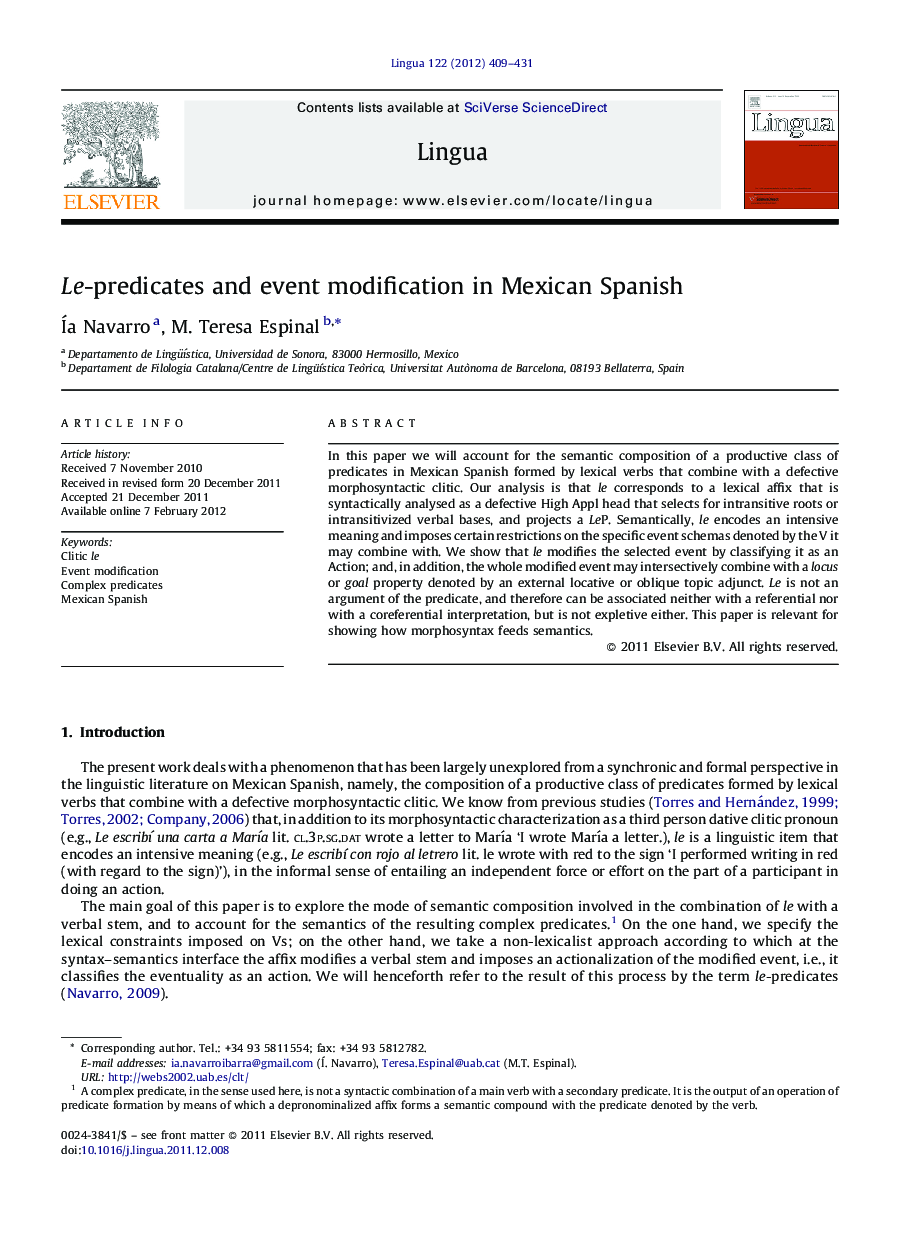| Article ID | Journal | Published Year | Pages | File Type |
|---|---|---|---|---|
| 935870 | Lingua | 2012 | 23 Pages |
In this paper we will account for the semantic composition of a productive class of predicates in Mexican Spanish formed by lexical verbs that combine with a defective morphosyntactic clitic. Our analysis is that le corresponds to a lexical affix that is syntactically analysed as a defective High Appl head that selects for intransitive roots or intransitivized verbal bases, and projects a LeP. Semantically, le encodes an intensive meaning and imposes certain restrictions on the specific event schemas denoted by the V it may combine with. We show that le modifies the selected event by classifying it as an Action; and, in addition, the whole modified event may intersectively combine with a locus or goal property denoted by an external locative or oblique topic adjunct. Le is not an argument of the predicate, and therefore can be associated neither with a referential nor with a coreferential interpretation, but is not expletive either. This paper is relevant for showing how morphosyntax feeds semantics.
